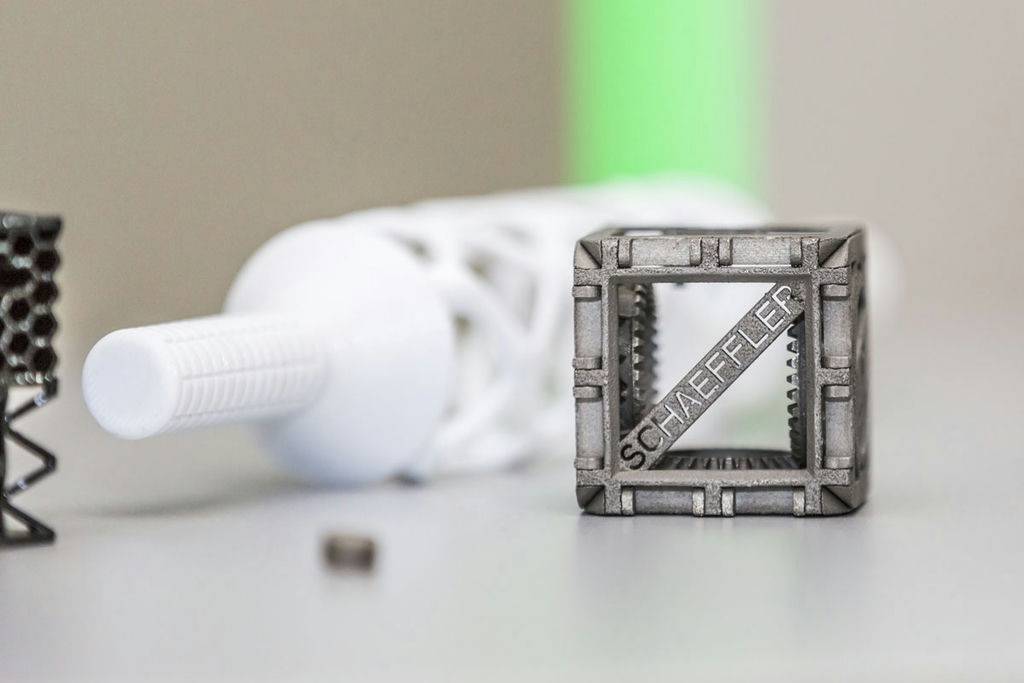[ihc-hide-content ihc_mb_type=”show” ihc_mb_who=”reg” ihc_mb_template=”3″ ]
[vc_row][vc_column][vc_column_text]Credits: http://am.vdma.org
As a global automotive and industry supplier, the Schaeffler Group offers a broad portfolio of motor, drive, and chassis components, as well as rolling and plain bearing solutions. Carsten Merklein is head of the Additive Manufacturing Department in the area of tool management and prototypes at Schaeffler Technologies AG & Co. KG in Herzogenaurach. Since April 2018, he has been part of the board of the Additive Manufacturing Association within VDMA. In this interview, he talks about his goals in the board, the potentials of AM technologies in automotive engineering, and about additive process chains in the year 2030.
What role does additive manufacturing (AM) play at Schaeffler?
Carsten Merklein: At Schaeffler, we have been employing additive technologies since the late 1990’s. In the beginning, we did rapid prototyping. Since 2012, we have done more and more additive manufacturing of functional components. In 2015, the increasing importance of AM made us found our “AM Fab Shops”, and its team now promotes additive manufacturing of intelligent tools and functional prototypes for our customers’ uses. Next to this, the team’s task is to open up AM as a future manufacturing technology for Schaeffler and to examine systematically how and where additive technologies could offer a positive contribution to our production system.
Which part of the AM value chain does your area cover?
Merklein: Schaeffler is a user. So we are concerning ourselves with the subject of AM in terms of our own needs. In prototyping, we were first processing plastics through stereolithography as well as with polyjet technologies. By now, we have our in-house systems for the production of metal components through laser beam melting and laser deposition welding. We use the functional prototypes thus produced in development projects. All of this happens across divisions – in the automotive and the industry sector. Examples are components for drives of electric vehicles or for thermal management of combustion engines.[/vc_column_text][vc_row_inner][vc_column_inner width=”1/2″][vc_column_text]How much potential do you expect additive technologies to have for automotive engineering?
Merklein: Manufacturing processes are changing. Among other things, they are increasingly moving towards digital engineering, in order to bring products to high maturity already in the virtual state before physical trials. AM is a very good addition to this, since it allows for realizing a digital model without much effort. However, this is only one aspect. If you look at the whole picture, you will see that AM in automotive engineering is still niched. Even when produced for the most exclusive sports cars, serial components do not pay off. This does not have to stay that way. We should regard AM less as a stand-alone technology and more as an addition to traditional manufacturing chains. If integrated cleverly, additive technologies can offer important contributions – for example by additively refining or individualizing conventionally produced base bodies. Via this route, AM could move to larger batch sizes, thus finding its way to large-scale production. In order to do that, we need to angle our thinking more towards process chains and to identify useful application fields for AM technologies. It might be an additive intermediate step which, on the way to the final product, renders five other forming or machining steps superfluous, thus saving tool costs and process time. Another field with potential is electromobility. Here, AM could deliver solutions in lightweight construction and thermal management that would not be realizable with other technologies.[/vc_column_text][/vc_column_inner][vc_column_inner width=”1/2″][vc_single_image image=”3266″ img_size=”full” add_caption=”yes”][/vc_column_inner][/vc_row_inner][vc_column_text]From a user’s point of view, which topics should AM system engineers advance?
Merklein: Of course, it is always about productivity, reliability, and capital commitment. Apart from that, there are other topics: so far, operators of AM systems need to be highly qualified in order to manage the complexity. Here, we wish for simpler, preferably standardized controls, an integrated software as well as a uniform data format uniting all necessary process data and parameters. This would mean some sort of “data container” that documents all information about a component from the pre-chain to post-processing and quality control. In addition, we need more reliable component qualities.
How do you imagine a typical AM process chain in 2030 – and who will be using it?
Merklein: In 2030, we will see highly integrated, automated, decentralized and fully digital process chains with a cooperation between additive and traditional technologies. AM systems will be automated, manual powder-handling or post-processing will be rare exceptions. Only very few companies will use all AM technologies – rather, production will happen close to the customer in a decentralized manner with various focal aspects. Digitalization will allow us to recognize deviations of real components by checking model and test data, and to readjust AM processes in a closed loop. Who will use all this? Through Industry 4.0, everyone will use AM in the future – starting with workmen, small and medium-sized enterprises up to globally active corporate groups; be it with their own systems or by buying services. We at Schaeffler will cover the whole process chain from construction up to delivery.
Recently, you were voted into the board of the Additive Manufacturing Association within VDMA. Are there any specific topics or goals you want to promote?
Merklein: I want to contribute towards the realization of the vision I just described. Integration into process chains, a higher degree of automation, and consistent digitalization are all preconditions for developing AM towards large-scale production. In this young technology field, all players must join forces and collaborate for standardization. We will manage that – and make work simpler for everyone.[/vc_column_text][/vc_column][/vc_row]
[/ihc-hide-content]
The AM Chronicle Editorial Team is a collective of passionate individuals committed to delivering insightful, accurate and engaging stories to additive manufacturing audiences worldwide.



